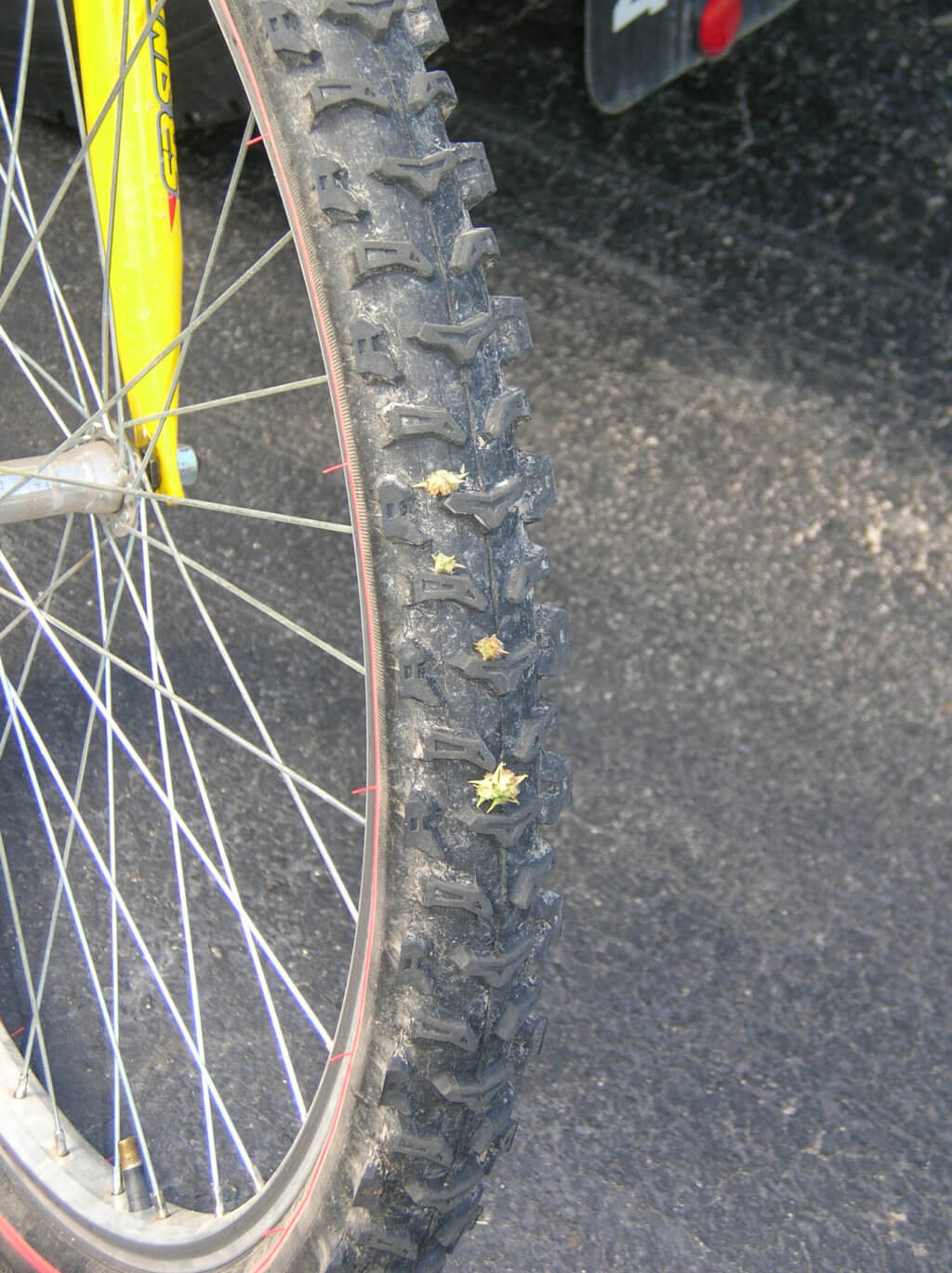Tribulus spp.
Description
- Yellow, 5 petalled flowers
- Leaves are opposite, hairy, 1-3 inches long, and divided into leaflets
- Stems are greenish-red, branches spread from the center of the plant, and can spread up to 2m
- Seed heads are sharp – they can injure bare feet and pets paws, or puncture bike tires!
Introduction and spread
- Spiny seeds can easily embed themselves into bike tires, clothing or pets fur and travel to new areas.
Consequences of invasion
- Poses a serious threat to agriculture and recreation
- Quickly develops a deep taproot and aggressively competes for water and nutrients needed by trees, field crops and native plants
- Can make hay become unusable as sharp spines of seed can injure mouth and digestive track of animals
- Can be toxic to sheep and cattle, causing nitrate poisoning, blindness and death
- Can ruin outdoor equipment and the paws of pets
Status in the CKISS region
- Puncturevine is currently classified as Prevent on the CKISS Annual Priority List.
- This species has not been found in the CKISS region. The goal is to provide education and awareness around this species to prevent the introduction and spread of it in our region.
- If you find this species in our region, please report it immediately!
- To learn more about how CKISS classifies and manages invasive species, see our Invasive Species Priority Lists page.
Integrated pest management options
- Can be easily removed by hand if detected early. Ensure removal of entire taproot and dispose at local landfill. Do not drop any seeds onto the ground
- Become PlantWise to prevent planting puncturevine in your garden.
- Once seed bank has established, monitor and remove plants as they emerge and continue to do so for several years
- Shallow tilling of seedlings or small plants can be effective in larger areas
- Make sure to thoroughly check clothing, pets, vehicles and equipment for seeds
- Report this weed if you see it!


